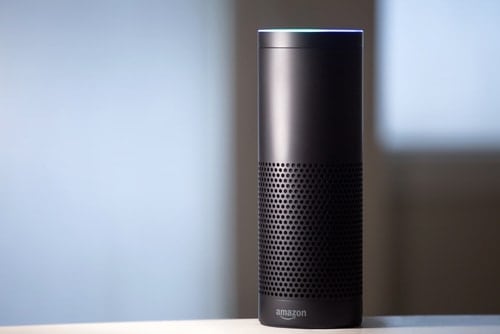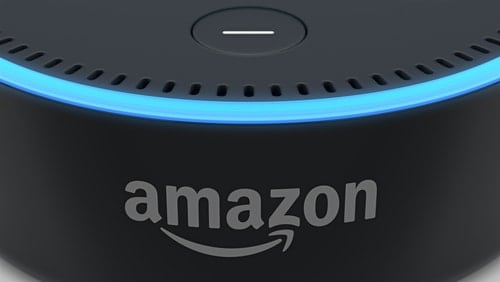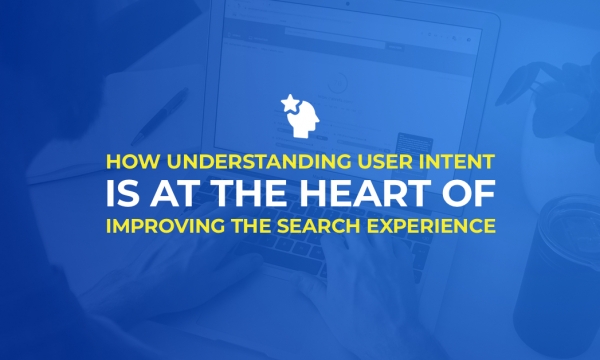
Since we last looked at how brands can their our web content to best capture informational voice searches and improve their strategy to prepare for voice, there have been a number of notable developments.
The emergence and rapid growth of voice in tech has become increasingly notable, with Samsung introducing its Bixby device, and sales of home assistants such as Amazon’s Echo and Google Home trending heavily on an upwards trajectory. If that isn’t enough to convince you that voice is more than just a temporary fad or gimmick, Facebook’s notorious ‘techtrepenuer’ Mark Zuckerberg is now getting into the mix with his own home assistant device he calls ‘Jarvis’ (rumoured to be voiced by legendary actor Morgan Freeman).
So it is clear this is going to be a big part of our future, but what does this mean for sites that rely on web visibility and ecommerce to stay alive?

It means that it is time to get ready to compete for a space in the changing world of search. Think of it this way, those who adapt quickest are going to see the most benefit in the short term – this puts so much value on the table.
For example, way back in 2002, early adopters of Google AdWords could jump on keywords like ‘insurance’ or ‘loans’ for as little as $0.50 per click, the same keywords now would set you back over $50 per click. That is a huge difference.
It’s a similar story with voice, if you can become the result for your chosen ‘Alexa, buy X’ keyword, you will win. Getting there first should be the primary objective for every organisation that does business online.
Who will this affect the most?

Without a doubt, this will have the biggest impact on product-based industries. If I’m brushing my teeth on a morning and realise I’m running low on toothpaste it is highly unlikely I’m going to ask Alexa/Google Home or any other voice assistant to buy X brand toothpaste. I would simply say ‘buy toothpaste’.
This nuance is where voice gets interesting. At the time of writing, services like Alexa return two results when given a search term like ‘buy toothpaste’. Just two. The question is therefore about how you make sure you are one of those two results.
No longer does the customer have the option of the first 100 results or the first 10 pages. It is likely that the customer journey will end in the purchase of one of these two results so attaining that position has unlimited lifetime value.
How does Amazon or Google choose which products to offer?

It is still early and this technology is very new, so of course, this question remains somewhat speculative – but here is what we know so far.
Amazon uses a feature called ‘Amazon Choice’ which utilises an algorithm that measures all of the products listed within Amazon’s infrastructure and returns the product with the best ratings or, user specific metrics such as items and brands you have purchased before.
This makes winning a ‘choice’ position early even more valuable as it could mean Amazon returns your result to the customer every time they go to buy that type of product again, even if you no longer hold the ‘choice’ spot.
Google uses a similar system to find products from ‘Google Express’ (Google’s version of a combined marketplace). That being said, given the similarity to the development of AdWords as a marketing platform, I think it is fair to expect some kind of cost-per-click situation in the future to maintain your place as the top result.
Though these may be the core factors, it will become clear that all of the assistants will utilise current SERP rankings in some way to determine the best brands and products to highlight. As a result, optimisation for voice starts with the good old SEO best practices we have grown to know and love.
Further to that point, both Google and Amazon have announced that they consider none-audible factors to determine voice rankings; this can include product image quality, descriptions and structured data.
What about local business?

Currently in the world of regular SEO, some of the largest changes to Google and other search engine’s ranking algorithm are to do with local business. This is something that will work particularly uniquely when it comes to voice purchasing.
Instead of searching for a product that could ship from a warehouse anywhere in the world, what if we want to search for a service? Let’s say your sink is leaking and you say “Alexa, call a plumber” – how would a voice assistant determine the top result?
Rather obviously, this won’t work via the aforementioned ‘Choice’ system. Currently, devices like the Echo and Google Home return results through a ‘skill’ based app system. For example, if you are searching for a local plumber, a voice assistant will utilise YELP or other directories to return what it deems be the correct answer based on a mixture of your exact location and Yelp’s user ratings. It is likely that these directories will dominate the voice results for most local business queries but, if you’re in the right niche, maybe it’s time to start learning how to make your own Alexa/voice skill and you could take the top spot.
Much like every innovation throughout the history of the ecommerce space, the early bird will most definitely catch the worm. Now, that might not be the only worm available, but it will certainly be the biggest. Spend some time learning how to create Alexa skills and mastering other assistant based voice commands for your business, use our guide for optimizing for voice search and you should be well on your way to earning those crucial ‘choice’ positions before your competitors can.



